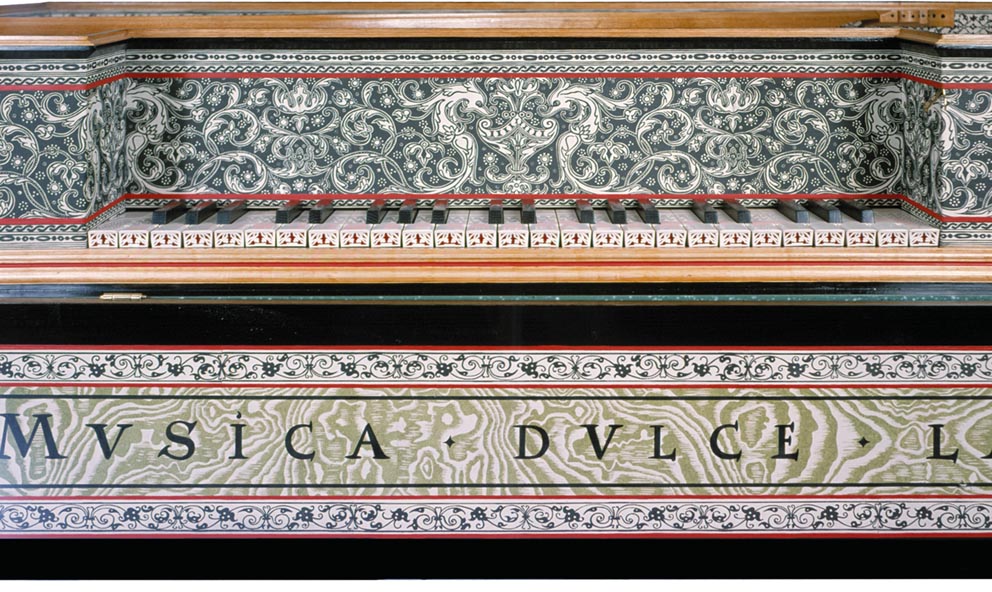Copy of a Ruckers 'spinett' virginal
Made in Edinburgh by Grant O’Brien in 1981

Details about
the keywell decoration
There are very few Ruckers
instruments which still retain all of their original decoration intact. However, enough instruments have survived
with at least parts of their original decoration intact so that it is still possible to
re-construct the original decoration of an entire instrument from them. The original 1599 spinett virginal in the
Castello Sforzesco, Milan retains its original black ‘seahorse’ block-printed
paper decorations and indeed it is these very papers that were used to cut the
woodblocks used to print the keywell paper patterns decorating the copy of this
instrument seen above.
The
decoration inside the front flap is based on that found on a number of
different instruments. It is also based
on the decorations that can be seen inside similar virginals depicted in
seventeenth-century Dutch and Flemish paintings (such as those of Vermeer, for
example). The motto MVSICA DVLCE
LABORVM LEVAMEN means ‘Music is the sweet solace of labour’. Like the inside of the lid, the central part
of the front flap uses a block-printed pattern which is meant to imitate green
watered silk. Red and black lines are painted over the papers as borders and
the Latin mottoes are painted in the watered silk fields after the papers are
glued in place.
The natural keyplates are made of bone and the sharps of bog oak, both of these being the traditional materials used in the original Ruckers instruments. The fronts of the keys are decorated with arcades made from white embossed and incised thick paper glued onto red parchment. The embossing tool and the small cutters used to make these arcades were all made individually by Grant O’Brien.
Return to the main page of this section
Return to the section on decorating instruments using Ruckers papers